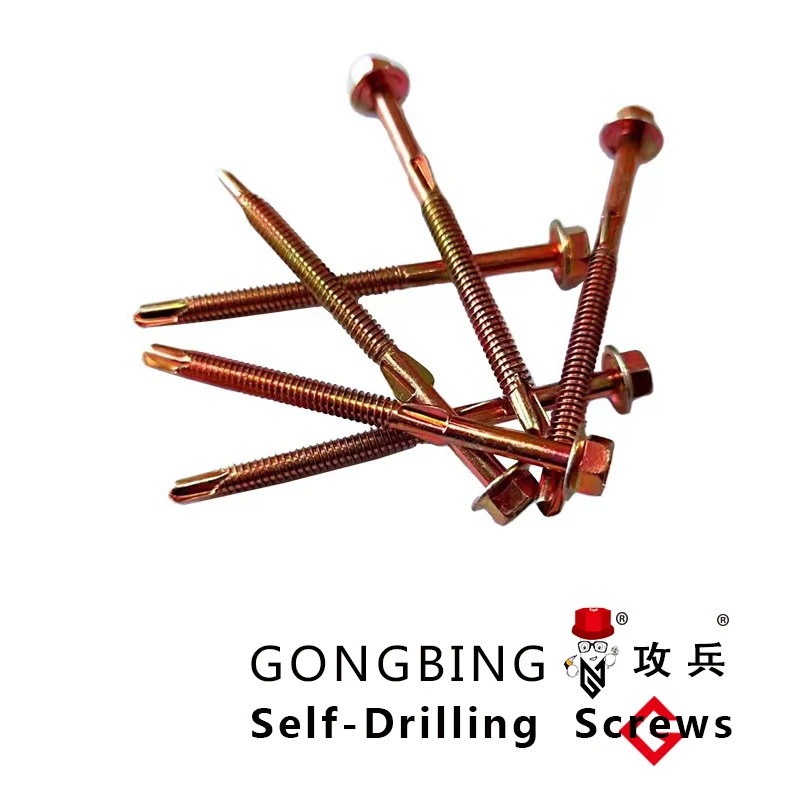Shear Studs Applications and Benefits for Metal Deck Construction
Understanding Shear Studs for Metal Decks Enhancing Structural Integrity
In modern construction, particularly in the realm of composite steel deck systems, shear studs play an essential role. These connectors ensure the effective transfer of loads between the concrete slab and the steel deck, making them crucial for maximizing the structural integrity of buildings. This article delves into the significance, design, and installation of shear studs for metal decks.
What Are Shear Studs?
Shear studs are short cylindrical pieces of steel that are welded to the surface of a metal deck to anchor the concrete slab on top. They act as shear connectors, enabling composite action between the steel and concrete. This composite action enhances the overall strength and stiffness of a structural system, allowing it to carry more load than either material could support independently.
The Role of Shear Connectors in Composite Steel Decks
Composite steel deck systems are commonly used in floors and roofs across various buildings, including commercial, residential, and industrial structures. In these systems, the metal deck provides the necessary support during construction, while the concrete slab adds strength and stability once cured. However, without effective shear connectors, the two materials would behave as separate entities, leading to potential structural failure.
Shear studs address this issue by transmitting shear forces between the steel and the concrete. When load is applied to the structure, the shear studs prevent relative movement between the two materials, allowing them to work together to resist bending and shear stresses. This synergy considerably improves the load-carrying capacity of the floor system.
Design Considerations for Shear Studs
The design of shear studs for metal decks must adhere to specific codes and standards to ensure they are adequate for the intended loads. Key factors to consider include
1. Size and Spacing The diameter and height of the shear studs influence their load capacity. Engineers must calculate the appropriate size based on project-specific requirements, including the type of loading and the characteristics of the metal deck. Moreover, spacing between studs should be established to provide even distribution of shear forces across the deck surface.
2. Welding Methods Shear studs are typically connected to the metal deck through welding. There are various welding techniques, such as arc welding and resistance welding. The chosen method must ensure a strong bond that can withstand the anticipated loads without failure.
shear studs for metal deck

3. Material Properties The material of shear studs must meet specific tensile and yield strength requirements to ensure reliability. Steel is the preferred material due to its high strength-to-weight ratio, which is critical in structural applications.
4. Load Conditions Shear studs must be designed to accommodate both dead loads (the weight of the structural elements) and live loads (the weight of occupants, furniture, and other temporary loads). Understanding the load conditions allows for better structural performance and safety.
Installation Process
The installation of shear studs must be performed with precision to ensure their effectiveness. The process generally involves
1. Preparation of the Metal Deck Before shear studs are installed, the metal deck should be clean and free of debris. Any surface contamination can compromise the weld quality.
2. Placement of Studs Shear studs are positioned according to the design specifications, ensuring correct spacing and alignment.
3. Welding Using the selected welding technique, each shear stud is securely welded to the metal deck. Properly executed welds are critical, as they directly affect the performance of the shear connectors.
4. Quality Inspection After installation, it is essential to conduct inspections to verify the quality of the welds and the structural integrity of the installation. Non-destructive testing methods may be employed to assess weld strength.
Conclusion
In summary, shear studs are an indispensable component of composite steel deck construction. They facilitate effective load transfer, ensuring that steel and concrete work in unison to create robust structures. By adhering to appropriate design principles and installation practices, engineers can enhance the performance, safety, and longevity of metal deck systems. As the demands for efficient and resilient buildings continue to grow, understanding the role of shear studs in construction will remain a priority for industry professionals.
-
Weatherproof Plastic Expansion Anchors for OutdoorNewsJun.06,2025
-
Sustainability in the Supply Chain: Eco-Friendly TEK Screws ProductionNewsJun.06,2025
-
Load-Bearing Capacity of External Insulation FixingsNewsJun.06,2025
-
Double Head Bolts: Enhancing Efficiency in Industrial MachineryNewsJun.06,2025
-
Corrosion Resistance in Chipboard Screws: Coatings for Wholesale DurabilityNewsJun.06,2025
-
Butterfly Toggle Bolts : Enhancing Structural ResilienceNewsJun.06,2025
